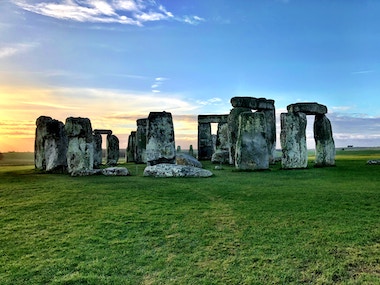For safety sake, go back to stone age!
Wow, what a bold demand note! Isn’t living in a civilized age a great gift? Yes, of course, it is. Our homes are cozy and warm, food can easily be shopped in the supermarket and very most of our jobs aren’t dangerous anymore. At least in comparison of hunting mammoths or deer. But still, there is something our far ancestors were so much better in than we are. Curious?
They used a brilliant and unmatched tool to improve their work safety: Storytelling. Just think of what even today people do at the campfire: They tell stories - it shortens the night and widens the horizon. And that is exactly what our ancestors already did, too. What else should they spend their evenings with, without having the culture technique of writing? They spread their knowledge via told stories. And think of the thrilling topics they could shorten their nights with: How to preserve the campfire. How to make a wheel. When to plant crops. How to tell if it is midsummer. And of course: How to safely hunt a mammoth.
The entire knowledge of mankind was over millennia transported by handed down stories.
Very much later - in fact not so long ago - we became more rational and smarter, we thought. We began counting and doing statistics around our life and of course about our efforts in safety. We started creating sophisticated documents in which we mapped how things happened. Listed which PPE was in place and which was not. We noted weather conditions, even if a safety incident took place in a building (the shoes could have been wet). In the very beginning, this kind of safety reporting rose awareness and let to tangible results. Missing protection devices were identified and set in place. Missing procedures were written down and are undergoing PDCA circles ever since. And in the end, safety figures improved, sometimes dramatically. But: They did not go down to zero. A residuum lasted and one from a very specific kind: Today's accidents are mostly based on behavioral mistakes.
Summarizing, reports are good to structure safety efforts and to go for the first 80%. And for this, they are even great. But now we have to aim for the difficult twenties. And here we face the limit of reporting. Because with using reports, we lost the key for effective knowledge sharing: We lost empathy.
But why is empathy is important, if you want to change behaviors? Think of, when do you change your habits? Ever when you have experienced, that they are unhealthy. If you touched a hot plate, you will be careful the next time. You made your experience. And thank god, science shows, that empathetic stories will be adopted by our brains like own experiences. This prevents us from having a very painful learning curve. And therefore, storytelling is essential for increasing work-safety, too.
To give you an impression of what I mean, one short example will underpin this thesis: Following an example* of a report and a story. While reading, feel into yourself and judge yourself:
The king dies.
The queen dies.
That was the report, now in comparison the story:
The king dies. The queen dies of grief.
Be honest: Even while telling the same thing, the story touches you. The report not. And moreover: I’m also pretty sure that you won’t forget this example and potentially consider stories a bit more in your business context. As I do.
Yours, Torsten Dederichs
To be continued... .
*) Thank you Veit Etzold, for this great example. Source: "Der weiße Hai im Weltraum" 2. Auflage; Willey-VCH Verlag; 2016

